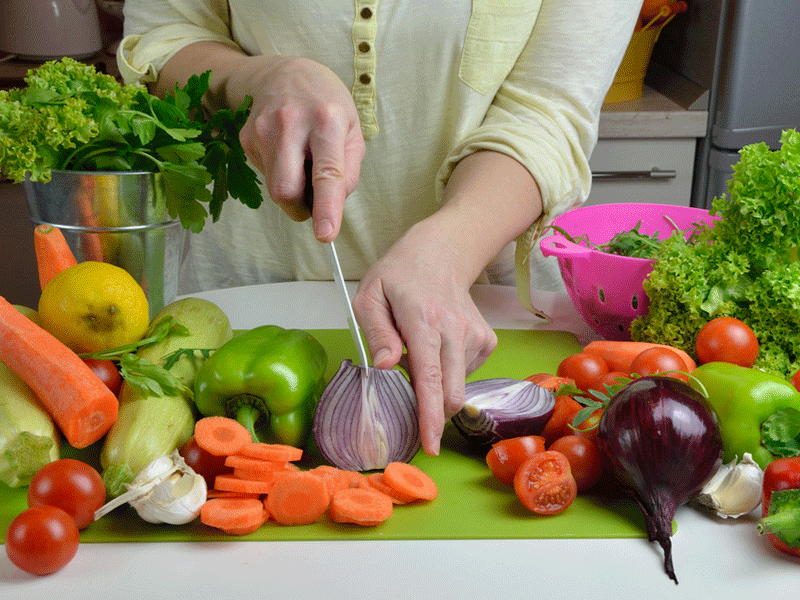In the pursuit of a healthier lifestyle, the role of nutrition cannot be overstated. As we navigate our culinary adventures, it's essential to harness the full potential of ingredients to maximize their nutritional value. In this comprehensive guide, we'll explore the art of nutritional cooking, unveiling tips and techniques to get the most out of your ingredients and, in turn, nourish your body for optimal well-being.
The Foundation of Nutritional Cooking
Before we delve into the specifics, let's establish the foundation of nutritional cooking. It's not just about counting calories; it's about understanding the unique nutritional profiles of the ingredients we use. From vibrant fruits and vegetables to lean proteins and whole grains, each component contributes to a well-balanced and nourishing diet.
1. Embrace the Rainbow: Incorporating Colorful Produce
A simple but powerful principle in nutritional cooking is to embrace a variety of colors on your plate. Different hues in fruits and vegetables signify diverse nutrients, antioxidants, and health benefits. Aim for a rainbow of colors in your meals, ensuring a broad spectrum of vitamins and minerals that support overall health.
2. Preserving Nutrients through Cooking Techniques
While some nutrients are best consumed raw, certain cooking methods can enhance the bioavailability of others. For example, lightly steaming or sautéing vegetables can make certain nutrients more accessible to the body. On the flip side, be mindful of overcooking, as it may lead to nutrient loss. Experiment with different cooking techniques to find the right balance for each ingredient.
3. Smart Pairings: Enhancing Nutrient Absorption
Certain nutrients are more effectively absorbed when paired with others. For instance, incorporating a source of vitamin C, like citrus fruits or bell peppers, can enhance the absorption of non-heme iron found in plant-based foods. Explore intelligent pairings to optimize nutrient absorption and create well-rounded, nutritionally dense meals.
4. Whole Grains: The Heart of Nutritional Cooking
Incorporate whole grains as the foundation of your meals. Whole grains such as quinoa, brown rice, and oats provide essential nutrients like fiber, vitamins, and minerals. They not only contribute to a feeling of fullness but also offer sustained energy, making them a crucial component of a nutritionally rich diet.
5. Healthy Fats: Balancing Flavor and Nutrition
Don't shy away from fats; instead, focus on incorporating healthy fats into your cooking. Avocados, nuts, seeds, and olive oil are excellent sources of monounsaturated and polyunsaturated fats that support heart health. These fats not only add richness to your dishes but also aid in the absorption of fat-soluble vitamins.
6. Mindful Portion Control: Quality Over Quantity
In nutritional cooking, the emphasis is on quality over quantity. Pay attention to portion sizes to avoid overeating, but also prioritize nutrient-dense foods. A smaller serving of nutrient-rich ingredients can often be more beneficial than a larger portion of less nutritious options.
7. Fresh Herbs and Spices: Flavorful Nutrition Boosters
Elevate the taste and nutritional content of your dishes by incorporating fresh herbs and spices. Beyond adding depth and complexity to flavors, herbs like basil, cilantro, and spices like turmeric and ginger pack a powerful antioxidant punch. Experiment with different combinations to enhance both the taste and nutritional value of your meals.
8. Seasonal Eating: Supporting Local and Nutritional Variety
Embrace the benefits of seasonal eating by incorporating locally sourced, fresh produce into your meals. Seasonal foods are not only more environmentally friendly but also offer a diverse array of nutrients. Explore farmers' markets or consider joining a community-supported agriculture (CSA) program to access a variety of seasonal ingredients.
9. Smart Substitutions: Healthier Alternatives without Sacrificing Flavor
In nutritional cooking, making smart substitutions can significantly impact the healthfulness of your meals. Replace refined grains with whole grains, swap out saturated fats with healthier alternatives, and experiment with plant-based protein sources. These subtle changes can make a substantial difference in the nutritional profile of your dishes.
10. Hydration: The Often Overlooked Nutritional Element
Don't forget the importance of hydration in nutritional cooking. Water is an essential nutrient that supports digestion, nutrient absorption, and overall bodily functions. Infuse water with fruits, herbs, or cucumber for added flavor and nutritional benefits.
11. Label Literacy: Making Informed Choices
Become adept at reading food labels to make informed choices about the products you use. Look for minimal additives, lower sodium content, and be wary of hidden sugars. Understanding food labels empowers you to select ingredients that align with your nutritional goals.
12. Meal Planning: Setting the Stage for Nutritional Success
Strategic meal planning is a cornerstone of nutritional cooking. Plan your meals to include a balance of macronutrients (proteins, fats, and carbohydrates) and micronutrients (vitamins and minerals). This not only ensures a nutritionally balanced diet but also streamlines your cooking process.
Conclusion
Nutritional cooking is not a restrictive diet; it's a celebration of the vibrant, nourishing potential inherent in the foods we consume. By understanding the nutritional value of ingredients and implementing smart cooking techniques, we can unlock the full spectrum of benefits for our well-being. Let each meal become a testament to the synergy of taste and nutrition, contributing to a healthier, more vibrant you. Happy and healthy cooking!

